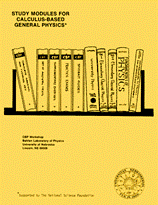Instructional Materials in Physics and Astronomy
Date of this Version
1975
Abstract
Suppose you get into your car and drive to _________.* During this trip, (1) the burning of the gasoline in the engine cylinders converts chemical energy into thermal energy of the gases -- that is, they become very hot; (2) the expansion of these hot gases turns the crankshaft, performing work; and (3) this work, transmitted to the wheels, gives the car kinetic energy -- which must be continually replenished, because of depletion by friction and air resistance. At the end of this trip, ____ gallons of gasoline have been converted into water vapor, carbon dioxide, and sundry less desirable vapors, scattered across ______ miles of countryside. In addition, the road, the air along it, and your engine have been heated up. No energy has been lost, but energy has merely been converted to different forms. So why not somehow collect all that energy again, and use it to drive another engine (presumably of a different kind)? That would not violate the first law of thermodynamics -- but try to do it!
Well, then, perhaps we should concentrate just on the operation of the heat engine, step 2 above. Present-day gasoline engines convert only a small fraction of the "heat energy" released in their cylinders into useful work. Since we are being pinched by energy shortages, why not gear up a research program to develop engines with (say) 90% efficiency? Again, this too is impossible!
These are illustrations of the fact that energy is often unavailable (or only partially available) for conversion into work. There is a fundamental limit to the efficiency that can be obtained in this conversion -- a limit that cannot be surpassed, regardless of technological developments. The basis of that limit is the subject of this module.



Comments
From Study Modules for Calculus-Based General Physics
Copyright © 1975 CBP Workshop, University of Nebraska–Lincoln.
Reproduction rights granted.